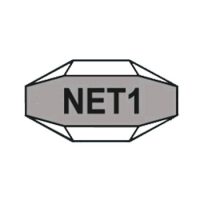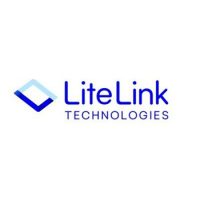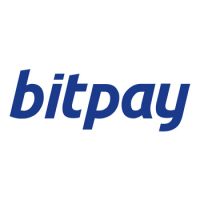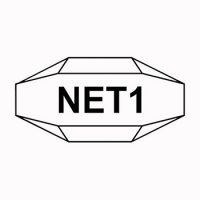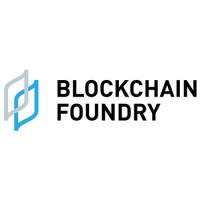Blockchain Press Releases
Why Are There No New Users in the Crypto Market? How Multi-Asset Trading Wallet BiyaPay Is Finding New Solutions Amidst Fierce Competition and User Confusion ?

SINGAPORE, March 31, 2025 /PRNewswire/ —
Introduction
In recent years, the cryptocurrency market has undergone a dramatic shift from euphoria to calm. At one point, Bitcoin and Ethereum prices hit new highs, and concepts like NFTs and the Metaverse rapidly gained traction, attracting a flood of new users. However, as the market cooled down, the growth of new users slowed significantly, even showing signs of stagnation. This phenomenon has caused concern within the industry: why is the crypto market struggling to attract new participants? Despite continuous technological innovation and an abundance of new projects, public interest has not kept pace. The challenges faced by the crypto market are rooted in increasing competition and a more complex ecosystem, which has left new users confused. This article will explore why the crypto market is experiencing a lack of significant new user growth and discuss how, in the midst of intense competition and user confusion, companies like BiyaPay, a leading multi-asset trading wallet, are finding new ways to drive growth in the crypto industry.
Market Situation Analysis
The competition in the crypto market has intensified, and the ecosystem has become increasingly saturated. From public chains to sidechains, to Layer 2 networks and various decentralized applications (dApps), the number of projects has exploded. According to statistics, over 350 active blockchain networks exist worldwide, and the number of new tokens issued each day reaches tens of thousands. The fragmentation of the market has intensified, and users are now faced with an overwhelming number of choices. However, despite the continuous increase in projects, user growth has not followed suit. Indicators like Total Value Locked (TVL) show that the current cycle has not surpassed previous market highs. The decline in search interest for the term “crypto” on Google Trends also reflects the cyclical decrease in public interest. For beginners, entering the crypto world is far from simple: hundreds of blockchains, wallets, and various protocols and applications make the decision process overwhelming, and the sheer number of options raises the cognitive and usability barriers.
The stagnation in new user growth is driven by multiple factors. First, the user experience of crypto products is significantly more complex than that of traditional internet applications. New users must not only install digital wallets, back up recovery phrases, purchase digital currencies, and pay miner fees but also switch between different blockchain networks, which is particularly daunting for those with no prior exposure to crypto technology. Second, market fragmentation is severe. The ecosystems of various public chains are isolated, making asset interoperability a challenge. This means users need to switch between platforms, for example, dApps on Ethereum have high transaction fees, and users seeking cheaper alternatives often have to learn new wallets and operational logic. The lack of unified standards and interoperability creates friction in user experiences. Lastly, information overload exacerbates user confusion. With thousands of token projects, new users often struggle to distinguish valuable projects from fraudulent ones. The complexity of the experience and the overload of information discourage potential users from entering the market.
Beyond the complexity of the user experience, external factors also contribute to the hesitation of new users entering the crypto market. One significant challenge is regulatory uncertainty. Different countries have vastly differing attitudes toward cryptocurrencies, and their regulations are subject to frequent changes. Some countries have welcomed crypto innovation only to suddenly impose strict regulations, while others have yet to define clear regulations. This uncertainty makes it difficult for crypto companies to operate compliantly, and users feel uneasy about investing in crypto due to the risk of sudden regulatory crackdowns. Another challenge is the frequent occurrence of security incidents, which has damaged the public image of the industry. Events such as exchange bankruptcies, project founders running off with funds, and hacking incidents have shaken user confidence in the safety of crypto platforms. The media’s coverage of crypto scams, money laundering, and other criminal activities has further exacerbated the industry’s reputation crisis. These events make ordinary users wary of entering the crypto space, as they fear losing their funds or getting caught up in illegal activities. Trust issues have become the most significant psychological barrier preventing new users from entering the market.
Core Barriers to User Growth
The target audience for the crypto industry is not homogeneous but highly diversified. Developers, ordinary users, investors, and institutions all have different needs, contributing to the fragmentation of the market. For example, public chain projects primarily target developers, as only developers can build applications that attract end users and grow the ecosystem. Therefore, public chains need to focus on “developer marketing” and technical documentation to encourage developers to adopt their chains. However, these efforts may not directly translate into growth for the average user base. For dApp applications, which should ideally focus on end users, many instead focus on attracting token holders and speculative funds. Sometimes token holders are not actual users of the product but engage in speculative arbitrage, which does not contribute to real user growth. Venture capitalists and institutional investors are primarily focused on return on investment (ROI), and they invest in projects with the expectation that token prices will appreciate. This often leads projects to prioritize token price management and exchange partnerships over improving the product’s appeal to everyday users. Meanwhile, retail speculators are more concerned with short-term price fluctuations and lack patience for long-term value, which makes it difficult to cultivate a loyal user base. Technical partners, such as cross-chain bridges and wallet plugins, form another isolated group. The diverse interests of these stakeholders contribute to the fragmentation of the market, making it harder to target and grow a unified user base.
The high technical complexity of crypto technology is another significant barrier to user adoption. Many ordinary people have heard of Bitcoin but find it difficult to understand blockchain principles, private key signing, or how to manage a string of characters on their own. The high technical threshold leads to mistakes or discomfort when users first experience the technology. For example, a user might accidentally enter the wrong address during a transaction, resulting in the loss of their assets. The high transaction fees, especially during Ethereum’s peak, also discourage small investors and beginners from participating in the market. These issues highlight that blockchain infrastructure is still far from being ready for large-scale commercial adoption. At the same time, the lack of trust has worsened the problem. The 2021 bull market attracted a wave of mainstream users, especially with celebrities endorsing NFTs, but many new users withdrew after the market crash in 2022. Exchange collapses and project failures have left people with negative perceptions of the industry. When the media frequently reports on Bitcoin’s “death” or the collapse of major crypto projects, it reinforces this negative view. Therefore, when technical complexity and trust issues are combined, convincing new users to enter the market becomes an uphill battle. They are either discouraged by the high barriers to entry or deterred by security concerns.
The high cost and complex entry process are additional hurdles for new users. For many newcomers, buying cryptocurrencies is already a significant barrier. Fiat-to-crypto channels are limited, and transaction fees can be high. Through third-party payment methods, users might face additional fees of 2-5%, discouraging small-scale users. Additionally, the volatility of crypto asset prices often causes new users to fear that they will “get stuck” as soon as they enter the market, adding to the psychological cost. Transaction costs are also significant, including high fees for blockchain Gas and additional charges for withdrawal and exchange transactions. Furthermore, the onboarding process is complex. Traditional financial account opening may only require identification documents, but in the crypto world, new users often face multiple steps: registering on exchanges, completing KYC (Know Your Customer) verification, linking bank accounts or wallets, depositing fiat currency to purchase USDT or BTC, and finally transferring funds to personal wallets. This process involves several platforms, and each step introduces new concepts (KYC, wallet addresses, private keys) that users need to understand. Some users may abandon the process midway or fall victim to phishing sites that steal recovery phrases. In comparison, Web2 applications have far simpler onboarding processes. The cumbersome entry process further reduces the attractiveness of crypto products to new users.
Where Is the Breakthrough?
To overcome these barriers, the crypto industry must focus on lowering entry barriers, building trust, and enhancing practical functionality. One company leading the way in this regard is BiyaPay, a global multi-asset trading wallet that offers potential solutions through its product features and service model.
BiyaPay’s standout feature is its multi-asset trading function, which allows users to manage various financial assets, including digital currencies, U.S. stocks, Hong Kong stocks, and more, all within a single platform. This “one-stop” design significantly reduces the entry barrier for new users. Firstly, new users no longer need to download multiple apps or switch between platforms. Traditionally, users needed to open a securities account to trade stocks and register with a crypto exchange for digital currencies. With BiyaPay, users can trade both stocks and crypto assets in one wallet, greatly simplifying the process. For traditional investors, they can now access digital currencies through a familiar stock trading platform, while crypto users can easily engage in traditional asset trading. Secondly, this multi-asset integration makes cross-market operations much more convenient. Users can exchange stablecoins for U.S. dollars and trade U.S. or Hong Kong stocks without the need for complex cross-border transfers or opening offshore accounts. BiyaPay supports converting USDT or other digital assets into fiat currencies and then using them to buy and sell U.S. or Hong Kong stocks, all without the hassle of opening offshore bank accounts. The platform allows for rapid account opening in just five minutes and seamless asset exchange, making global financial markets easily accessible. This simplified experience greatly reduces the psychological barriers for new users, making them more likely to engage with different features.
Another breakthrough offered by BiyaPay is its global payment and remittance services, which solve the difficulties associated with cross-border transactions. The platform supports real-time exchange and remittance for over twenty fiat currencies and more than ten major cryptocurrencies at very low costs. For example, a user working overseas can easily send funds to their family by exchanging digital assets into the local fiat currency on BiyaPay and transferring the funds to a recipient’s account. The low fees (around 0.5%) and the elimination of complex intermediary steps provide a significant advantage over traditional remittance services, which can take days to process and have high fees. This service meets real-world financial needs, attracting users who may not be interested in crypto technology itself but need a convenient cross-border payment solution. For instance, in countries experiencing high inflation, residents can use BiyaPay to convert their local currency into stablecoins for value preservation and then exchange them back into fiat currency when needed. This new use case for crypto is a major breakthrough for the industry, as it shifts the focus from speculative trading to practical financial solutions, making the crypto world more accessible.
BiyaPay also builds user trust by operating in a fully compliant and secure manner. It is headquartered in Singapore, with subsidiaries in the U.S., Canada, and Hong Kong, holding comprehensive financial licenses to ensure legal and compliant operations. BiyaPay emphasizes its “complete licensing, safe and reliable” credentials, which help build trust, especially during times of regulatory uncertainty. Users are more likely to trust a regulated platform with legitimate licenses rather than an anonymous underground exchange. In addition to regulatory compliance, BiyaPay also focuses on security, using bank-grade encryption and multi-factor authentication mechanisms to safeguard user assets and data. This focus on security and risk management ensures that users can make secure transactions without worrying about their funds being frozen or confiscated, a common concern among crypto users.
BiyaPay’s multi-asset strategy not only lowers entry barriers but also broadens its potential user base. By offering both traditional financial assets and cryptocurrencies on the same platform, BiyaPay appeals to a diverse range of investors. Traditional investors who are interested in global markets can use BiyaPay to access cryptocurrency markets easily, while crypto investors can use the platform to diversify their portfolios into traditional assets. This cross-pollination between the “stock” and “crypto” communities significantly expands BiyaPay’s user base.
Future Trends and Outlook
Looking ahead, the emergence of Web3 technologies offers new growth opportunities for the crypto market. Social finance, NFTs, and the Metaverse are emerging fields that could drive the next wave of user growth. BiyaPay can tap into these trends by supporting features such as NFT asset management and Metaverse payment solutions, which would cater to users’ needs in these new areas.
In addition to technological innovation, the crypto industry needs to invest in branding and user education to truly reach new audiences. Clear marketing messages and user education efforts can break down existing barriers to entry. By promoting simple, relatable messages such as “blockchain makes cross-border payments as easy as texting,” crypto platforms like BiyaPay can resonate with mainstream users and reduce the cognitive hurdles new users face.
Conclusion
The slowdown in new user growth in the crypto market is due to a combination of factors, including technological complexity, market fragmentation, and trust issues. However, by improving the user experience, strengthening compliance and security, and expanding practical use cases, the market can overcome these barriers. BiyaPay, as a leading multi-asset trading wallet, demonstrates a successful approach by offering integrated services, global payment solutions, and strong regulatory compliance. The future of the crypto industry looks promising, with the potential to attract new users through innovative products and improved user experiences.
About BiyaPay
BiyaPay is a global multi-asset trading wallet that supports instant exchange of more than 30 fiat currencies and more than 200 digital currencies, and provides USDT direct advertising US stocks, Hong Kong stocks and digital currency spot and contract trading services. Its compliance withdrawal channel and one-stop financial ecosystem are trusted by users around the world.
Learn more information
BiyaPay official website: www.biyapay.com
Customer service email: [email protected]
Telegram supports: https://t.me/biyapay001
Logo – https://mma.prnewswire.com/media/2568572/image_5031329_39789762_Logo.jpg

Blockchain Press Releases
Bybit Earnival Unlocks 4 Weeks of Golden Rewards

DUBAI, UAE, May 30, 2025 /PRNewswire/ — Bybit, the world’s second-largest cryptocurrency exchange by trading volume, is excited to raise the stakes for Bybit Earn users in a four-week long rewards program, the Bybit Earnival. From now to June 22, eligible Bybit users may sign up for the event for a chance to earn up to 555% APR and Gold Tokens.
With paradigm shifts taking place in the global investment landscape, Bybit Earn offers a wide range of yield-bearing products catered to the diverse needs of traders. The offerings unlock access to beginner products with guaranteed returns such as flexible staking, advanced savings products at various risk levels, and tokenized real-world assets including XAUT, a digital token backed by physical solid gold.
For four weeks in a row, Bybit users may check into Bybit Earn for a rewarding experience packed with exclusive perks:
- New User Exclusives: Users new to Bybit Earn can enjoy a boost for Fixed Savings products of up to 555% APR on USDT. The offer applies in the first two days after their initial deposit and staking of 100 to 300 USDT.
- Extra APR Savings Products Every Week: Limited-time savings products with highly competitive APRs, starting at 500 USDT in net deposit, are refreshed daily at 6 AM UTC, with new offers launching every Monday at midnight.
- Weekly Leaderboard Prize: Participants who acquire 3,000 USDT or more weekly in eligible Earn products can compete on the weekly leaderboard to win up to 1,000 USDT in Gold Tokens. Rankings update daily, and rewards are distributed within 7–14 days.
The event is open to verified retail customers with Savings service enabled on Bybit to ensure a fair and even level competition.
Bybit Earn is a popular tool for Bybit users to maximize the earning potential of their idle crypto assets on the trading platform. With a focus on consistent yield and regular promotions for higher APR, Bybit Earn is trusted by millions of users on Bybit, the one-stop solution for all their crypto needs.
Terms and conditions apply. For details and eligibility, users may visit Bybit Earnival.
#Bybit / #TheCryptoArk
About Bybit
Bybit is the world’s second-largest cryptocurrency exchange by trading volume, serving a global community of over 70 million users. Founded in 2018, Bybit is redefining openness in the decentralized world by creating a simpler, open and equal ecosystem for everyone. With a strong focus on Web3, Bybit partners strategically with leading blockchain protocols to provide robust infrastructure and drive on-chain innovation. Renowned for its secure custody, diverse marketplaces, intuitive user experience, and advanced blockchain tools, Bybit bridges the gap between TradFi and DeFi, empowering builders, creators, and enthusiasts to unlock the full potential of Web3. Discover the future of decentralized finance at Bybit.com.
For more details about Bybit, please visit Bybit Press
For media inquiries, please contact: [email protected]
For updates, please follow: Bybit’s Communities and Social Media
Discord | Facebook | Instagram | LinkedIn | Reddit | Telegram | TikTok | X | Youtube
Logo – https://mma.prnewswire.com/media/2267288/Logo.jpg
![]() View original content:https://www.prnewswire.co.uk/news-releases/bybit-earnival-unlocks-4-weeks-of-golden-rewards-302469497.html
View original content:https://www.prnewswire.co.uk/news-releases/bybit-earnival-unlocks-4-weeks-of-golden-rewards-302469497.html

Blockchain
Blocks & Headlines: Today in Blockchain – May 29, 2025 (Vaulta, Fosun, Signing Day Sports, Credit Unions, Gaming Innovations)

Welcome to Blocks & Headlines, your definitive daily briefing on the latest blockchain breakthroughs, cryptocurrency developments, and Web3 innovations. In today’s edition—May 29, 2025—we explore five pivotal stories shaping the decentralized economy:
- FT Analysis: Crypto Regulation and Institutional Adoption
- Signing Day Sports Seals Deal with Blockchain Digital Infrastructure
- Vaulta & Fosun Partner to Power Hong Kong’s Blockchain Backbone
- Transforming Online Gaming: Blockchain’s Next Frontier
- Credit Unions Embrace Blockchain for Trustworthy Financial Services
This op-ed–style roundup delivers concise yet insightful coverage, critical analysis, and expert opinion on each development’s relevance within the broader blockchain and cryptocurrency ecosystem.
1. FT Analysis: Crypto Regulation and Institutional Adoption
Overview. The Financial Times reports on evolving global regulatory landscapes and their impact on institutional cryptocurrency adoption. FT highlights how major funds and asset managers navigate compliance frameworks in the US, EU, and Asia to integrate digital assets into traditional portfolios.
Source: Financial Times
Detailed Analysis. As regulators across jurisdictions craft tailored guidelines—from MiCA in Europe to the SEC’s evolving crypto classifications in the US—institutions face a balancing act between innovation and compliance:
- MiCA’s Market Integrity Measures: New EU rules mandate clear disclosures for stablecoin issuers and exchange operators, raising the bar for consumer protection.
- SEC’s Custody Interpretations: Emerging guidance on digital asset custody models, including qualified custodians versus self-custody frameworks.
- Asia’s Sandbox Approaches: Hong Kong and Singapore expand sandbox programs, offering controlled environments for DeFi and tokenization trials.
Opinion. Regulatory clarity is the linchpin for institutional inflows. While stringent frameworks may seem burdensome, they ultimately foster market confidence and prevent systemic risks. Asset managers should proactively engage with policymakers, leveraging sandbox insights to shape pragmatic, innovation-friendly regulations.
2. Signing Day Sports Seals Deal with Blockchain Digital Infrastructure
Overview. According to TradingView’s Reuters feed, Signing Day Sports has executed a definitive agreement to acquire Blockchain Digital Infrastructure, a profitable data-hosting specialist serving DeFi and NFT platforms.
Source: Reuters via TradingView
Detailed Analysis. The acquisition underscores the rising value of specialized blockchain infrastructure:
- Scalable Data Nodes: Blockchain Digital Infrastructure operates 150+ high-throughput nodes, ensuring low-latency data delivery for real-time sports NFT drops.
- Profitability Metrics: The company reported $32 million in EBITDA last fiscal year, highlighting sustainable revenue in a niche market.
- Strategic Synergies: Signing Day Sports plans to integrate hosted nodes into its upcoming sports collectibles marketplace, guaranteeing seamless token minting during high-traffic events.
Opinion. In Web3, infrastructure is the invisible backbone. For NFT marketplaces and DeFi protocols, node reliability and data throughput directly impact user experience—and ultimately, revenue. This move positions Signing Day Sports to compete at scale, setting a precedent for vertical integration in blockchain hosting.
3. Vaulta & Fosun Partner to Power Hong Kong’s Blockchain Backbone
Overview. Coindesk reports that Vaulta, a leading digital asset platform, is teaming up with Fosun International to develop blockchain infrastructure for Hong Kong’s emerging crypto hub.
Source: CoinDesk
Detailed Analysis. The collaboration aims to build secure, high-performance rails for trading, custody, and tokenization:
- Layer-1 Interoperability: Joint development of a cross-chain protocol connecting Ethereum, Binance Smart Chain, and local DLT frameworks.
- Institutional Custody Solutions: Licensed trust entities under Fosun’s umbrella will offer insured cold-storage services for professional investors.
- Regulatory Cooperation: Partnership includes a liaison with the Hong Kong SFC to ensure compliance with the new Virtual Assets Service Provider (VASP) regime.
Opinion. Asia remains a hotbed for blockchain innovation, but regulatory fragmentation poses hurdles. Vaulta’s alliance with Fosun exemplifies public-private synergy—combining local market expertise, financial strength, and technical know-how to anchor the city’s digital asset ambitions.
4. Transforming Online Gaming: Blockchain’s Next Frontier
Overview. TronWeekly examines how blockchain technologies—especially NFTs and decentralized marketplaces—are redefining online gaming economies.
Source: TronWeekly
Detailed Analysis. Key trends driving gaming’s blockchain revolution:
- Play-to-Earn Economies: Games like Axie Infinity and emergent titles use tokenized rewards and NFT-based assets to create real-world value for players.
- Decentralized Marketplaces: Platforms such as Enjin and Immutable X offer gas-free trading environments for in-game items, enhancing liquidity.
- Cross-Game Asset Portability: Standards like ERC-1155 enable items to move seamlessly between compatible titles, fostering interoperability.
Opinion. Gaming is blockchain’s killer app. Beyond speculative hype, tokenization can democratize game economies, allowing genuine ownership and secondary markets. Developers must, however, tackle scalability and user onboarding frictions—layer-2 solutions and intuitive wallets are essential for mass adoption.
5. Credit Unions Embrace Blockchain for Trustworthy Financial Services
Overview. AP’s business coverage highlights several US credit unions piloting blockchain-based platforms to enhance transaction transparency, reduce settlement times, and cut cross-border remittance fees.
Source: AP News
Detailed Analysis. Examples of credit union blockchain pilots:
- Consortium-Led DLT: A consortium of midwestern credit unions uses a permissioned Hyperledger Fabric network to settle inter-credit-union payments in near real-time.
- Remittance Solutions: Deployment of Stellar-based rails reduces remittance costs by up to 60%, benefiting diaspora communities.
- Member Identity Management: Verifiable credential systems streamline KYC processes, reducing onboarding time from days to hours.
Opinion. As community-focused institutions, credit unions can leverage blockchain to reassert their value proposition—offering cost-effective, transparent services that rival large banks and fintechs. Success will hinge on member education and seamless integration with legacy core banking systems.
Central Themes
Today’s dispatch reveals five core themes:
- Regulatory Engagement: From FT’s analysis to Hong Kong’s VASP regime, clear rules underpin institutional and retail growth.
- Infrastructure Control: Signing Day Sports’ acquisition and Vaulta’s Fosun partnership demonstrate the premium on reliable blockchain rails.
- Economic Innovation: Play-to-earn gaming and credit union pilots show tokenization’s real-world impact.
- Interoperability Focus: Cross-chain protocols and ERC-1155 standards drive seamless Web3 experiences.
- Market Confidence: Institutional adoption and compliance frameworks foster long-term trust.
Conclusion
In today’s Blocks & Headlines, we see blockchain’s evolution from experimental playground to enterprise-grade infrastructure: regulators clarify, institutions invest, communities adopt, and developers innovate. Whether you’re tracking regulatory shifts, infrastructure deals, gaming revolutions, or financial cooperatives, the decentralized ledger continues to reshape industries.
Join us tomorrow for Blocks & Headlines, where we continue to unpack blockchain’s latest breakthroughs—one block at a time.
The post Blocks & Headlines: Today in Blockchain – May 29, 2025 (Vaulta, Fosun, Signing Day Sports, Credit Unions, Gaming Innovations) appeared first on News, Events, Advertising Options.
Blockchain Press Releases
HTX DAO and HTX Ventures at Bitcoin 2025: Empowering the Global Rise of the Bitcoin Ecosystem

SINGAPORE, May 29, 2025 /PRNewswire/ — HTX DAO and HTX Ventures, two integral forces within the HTX ecosystem, proudly participated in Bitcoin 2025, the world’s premier Bitcoin summit held in Las Vegas. Engaging with global crypto leaders, they actively explored the future of Bitcoin and the broader digital asset industry—while supporting innovation and accelerating transformation across the decentralized ecosystem.
Justin Sun, Advisor to HTX and Founder of TRON, joined a high-profile panel discussion during the event, where he shared invaluable insights on Bitcoin’s evolution, WBTC’s critical role in smart contract integration, and how U.S. policy signals are shaping worldwide adoption.

“One of the biggest lessons I’ve learned since entering crypto in 2012 is: never bet against Bitcoin,” said Sun. “We’ve already seen Bitcoin surpass $110,000, and I firmly believe that as long as we keep building, Bitcoin will continue to hit new highs.”
Reflecting on his recent engagement with U.S. President Donald Trump, Sun emphasized the significance of political support for the industry, “President Trump’s backing is monumental. Without his support, Bitcoin wouldn’t have broken $100,000. The U.S. plays a leading role in global financial regulation—once it sets a clear crypto policy, other countries will follow. This will speed up global Bitcoin adoption and bring more people into the crypto space.”
Sun also spoke in depth about Wrapped Bitcoin (WBTC) as a gateway for unlocking Bitcoin’s potential in the smart contract world, “WBTC enables Bitcoin holders to interact with DeFi, earn yield, and use BTC as collateral across Ethereum, TRON, Solana and more. It transforms Bitcoin into a programmable asset. With proof-of-reserve, on-chain transparency, and cold storage security, WBTC is both safe and powerful.”
Looking ahead, Sun forecasted that traditional financial products will inevitably migrate onto the blockchain, creating new opportunities for yield and arbitrage, “WBTC is just the first step. In the future, all financial products—stocks, bonds, stablecoins—will be brought on-chain. Transparency and decentralization will define the next generation of global finance.”
Immersive Community Experience by HTX DAO and HTX Ventures
During the event, HTX DAO and HTX Ventures unveiled a life-size replica of Justin Sun’s iconic space capsule, inviting attendees to participate in an immersive and shareable experience. Visitors were encouraged to follow @HTX_DAO and @Ventures_HTX on X (formerly Twitter), and post creative selfies using the hashtag #HTXDAOLasVegas. Winners received up to 100 USDT in crypto rewards. The activation quickly became a highlight of the event.

Notably, Bitcoin 2025 gathered an impressive lineup of high-profile speakers, including U.S. Vice President JD Vance, Eric Trump, White House advisor on AI and crypto David Sacks, MicroStrategy Co-Founder Michael Saylor, and BitMEX Co-Founder Arthur Hayes. Throughout the conference, these leaders engaged in in-depth discussions on Bitcoin ecosystem development, regulatory policy, technological innovation, and global adoption—providing valuable direction for the industry’s future.
Continuing the Mission to Empower Web3
Through thought leadership and creative engagement, HTX DAO and HTX Ventures demonstrated their ongoing commitment to building a smarter, more accessible Bitcoin ecosystem.
About HTX DAO
As a multi-chain deployed decentralized autonomous organization (DAO), HTX DAO demonstrates an innovative governance approach. Unlike traditional corporate structures, it adopts a decentralized governance structure composed of a diversified group, jointly committed to the success of this organization. This unique ecosystem advocates openness and encourages all DAO participants to propose ideas that can promote the development of HTX DAO.
About HTX Ventures
HTX Ventures, the global investment division of HTX, integrates investment, incubation, and research to identify the best and brightest teams worldwide. With more than a decade-long history as an industry pioneer, HTX Ventures excels at identifying cutting-edge technologies and emerging business models within the sector. To foster growth within the blockchain ecosystem, we provide comprehensive support to projects, including financing, resources, and strategic advice.
HTX Ventures currently backs over 300 projects spanning multiple blockchain sectors, with select high-quality initiatives already trading on the HTX exchange. Furthermore, as one of the most active FOF (Fund of Funds) funds, HTX Ventures invests in 30 top global funds and collaborates with leading blockchain funds such as Polychain, Dragonfly, Bankless, Gitcoin, Figment, Nomad, Animoca, and Hack VC to jointly build a blockchain ecosystem. Visit us here.

Photo – https://mma.prnewswire.com/media/2699147/image_1.jpg
Photo – https://mma.prnewswire.com/media/2699148/image_2.jpg
Photo – https://mma.prnewswire.com/media/2699149/image_3.jpg
Logo – https://mma.prnewswire.com/media/2621232/HTX_DAO_Logo.jpg
![]() View original content:https://www.prnewswire.co.uk/news-releases/htx-dao-and-htx-ventures-at-bitcoin-2025-empowering-the-global-rise-of-the-bitcoin-ecosystem-302468522.html
View original content:https://www.prnewswire.co.uk/news-releases/htx-dao-and-htx-ventures-at-bitcoin-2025-empowering-the-global-rise-of-the-bitcoin-ecosystem-302468522.html

-

 Blockchain Press Releases1 day ago
Blockchain Press Releases1 day agoRain Expands Support to Solana, Tron, and Stellar, Enabling More Partners to Launch Stablecoin-powered Card Programs
-

 Blockchain7 days ago
Blockchain7 days agoBioSig Technologies, Inc. Signs Definitive Share Exchange Agreement with Streamex Exchange Corp. to Launch First-Mover Real-World Asset (RWA) Tokenization Company Bringing Commodity Markets On-Chain.
-

 Blockchain Press Releases3 days ago
Blockchain Press Releases3 days agoCoinW Teams Up with Superteam Europe to Conclude Solana Hackathon and Accelerate Web3 Innovation in Europe
-

 Blockchain Press Releases4 days ago
Blockchain Press Releases4 days agoFlipster Reveals Middle East Expansion Plans and Appoints Regional Leadership to Bolster Crypto Trading
-

 Blockchain3 days ago
Blockchain3 days agoBlocks & Headlines: Today in Blockchain – May 27, 2025 Featuring Blockchain.com, Bilal Bin Saqib, XRP Ledger, Unstoppable Domains, ReNEW, MEXC Ventures
-

 Blockchain4 days ago
Blockchain4 days agoBlocks & Headlines: Today in Blockchain – May 26, 2025 (Lightchain AI, Cetus Hack, Bilal Bin Saqib, The Blockchain Group)
-

 Blockchain Press Releases5 days ago
Blockchain Press Releases5 days agoAB Charity Foundation X AB Blockchain Join Forces to Advance the Global “Tech for Good” Mission
-

 Blockchain4 days ago
Blockchain4 days agoFinfra Astra Fintech Launches Canada’s First Solana Accelerator in Partnership with MixMarvel — Named ‘AMS’







